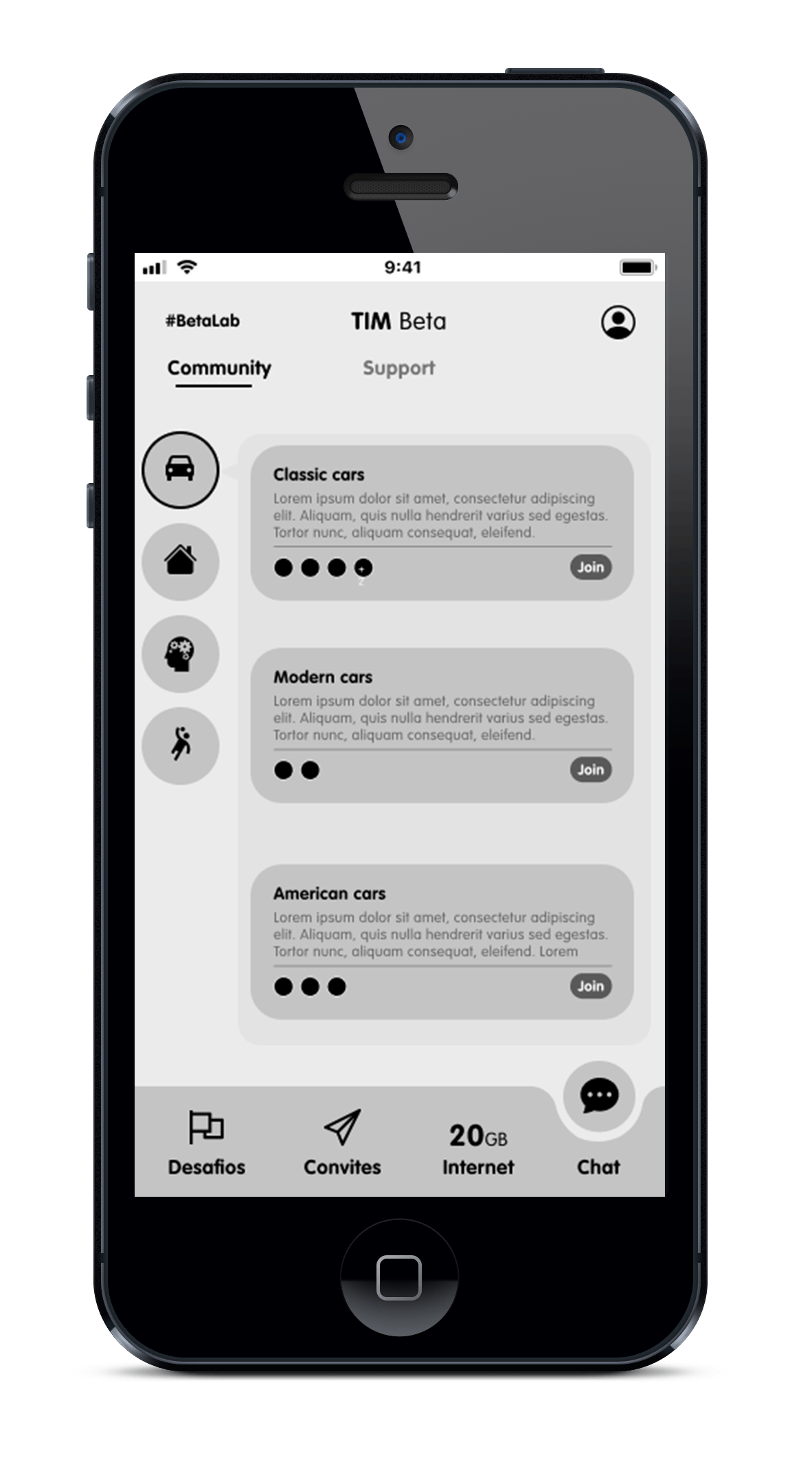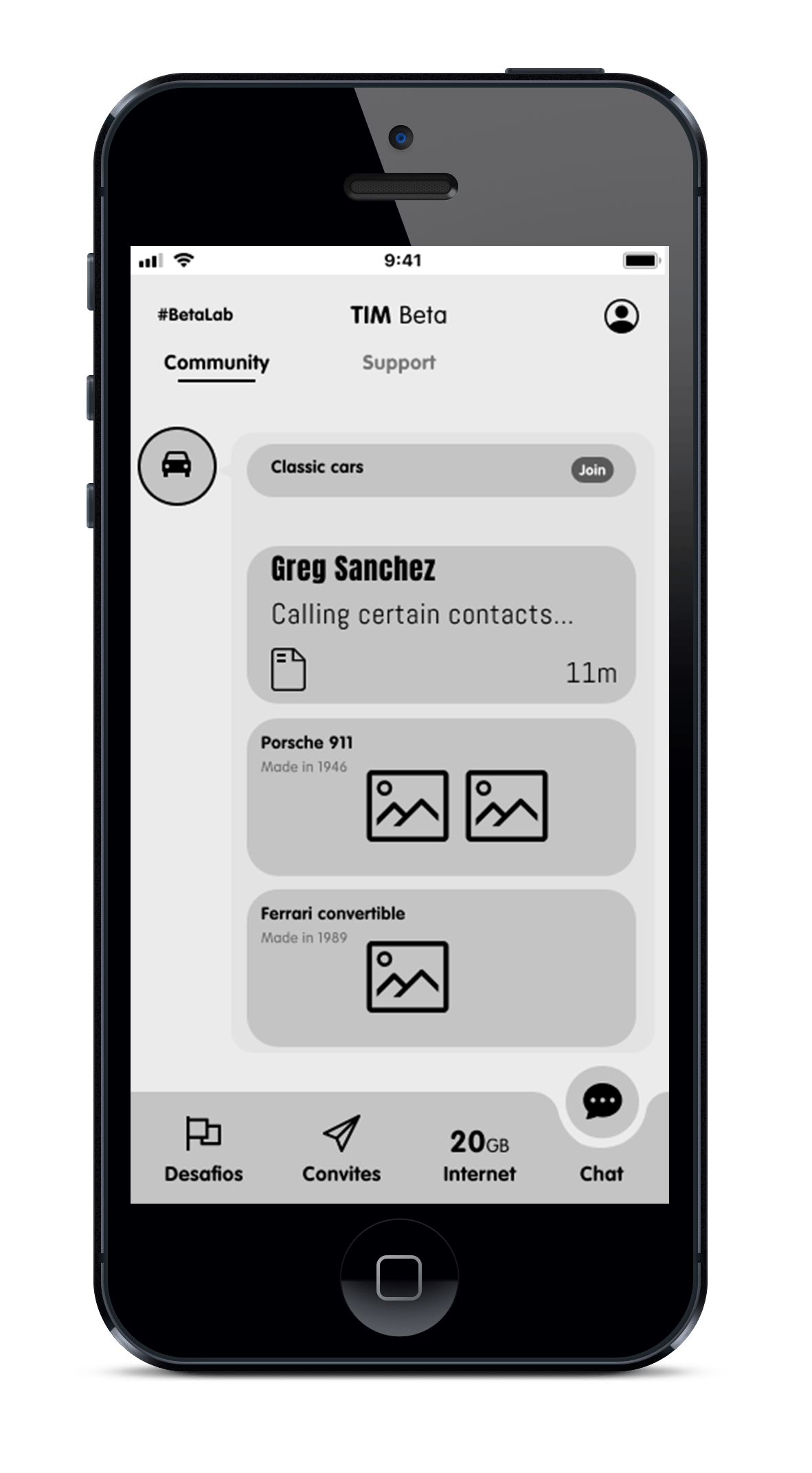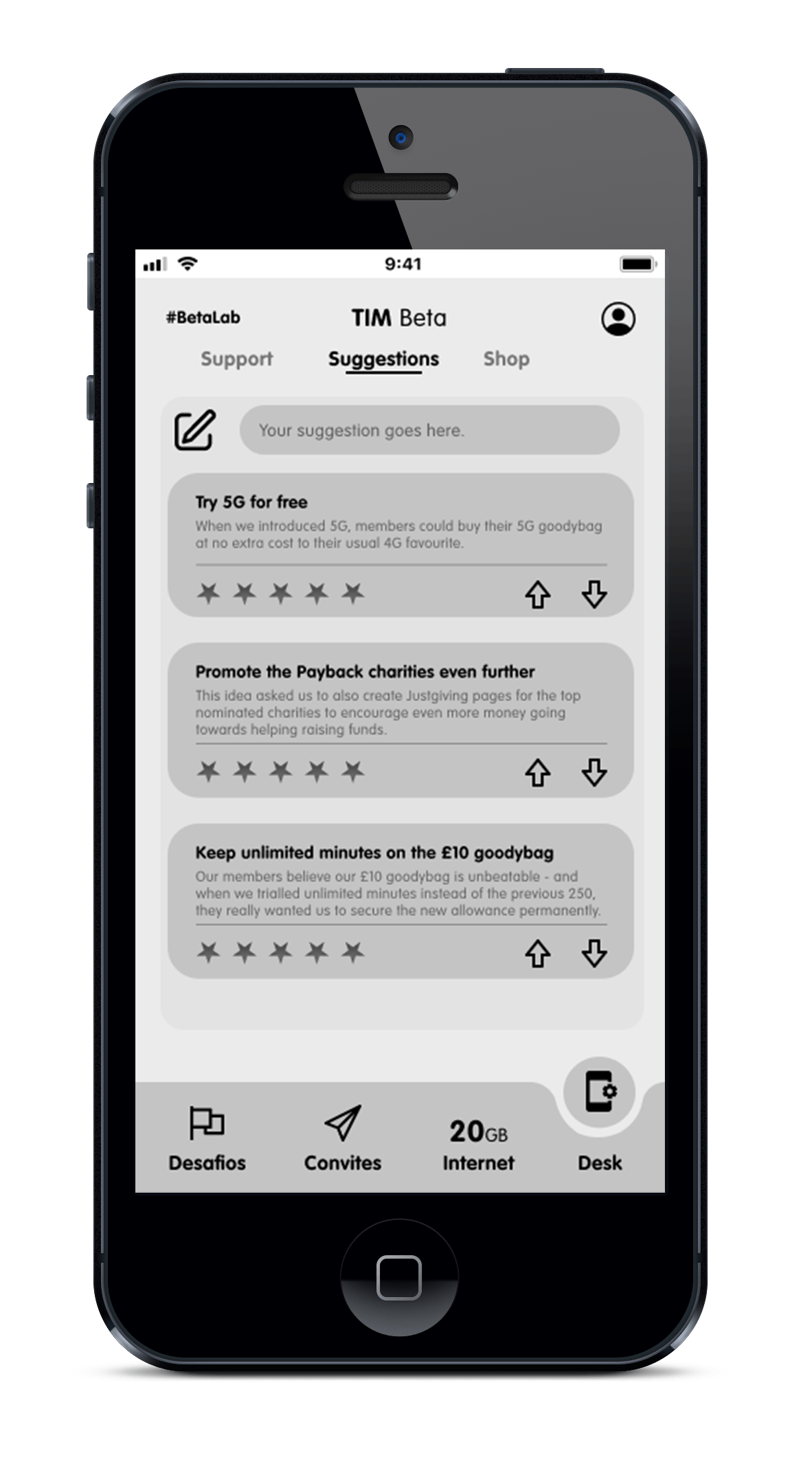Mission: Improving customer service while creating a community of users
My role: Since the client – and users – are Brazilian and I was the only person in the team who speaks Portuguese, my focus was research (desk and qualitative, including interviews with the users), ideation, and communication with the client.
Team: Ruben Rodrigues, Alen Mehmedagic, Alexandra Aran, Algot Wikstrom, Sten Bergman
Duration: 3 Months
Client: TIM Brasil, one of the largest Brazilian telecommunications companies.
The challenge
Changing the way users interact with the company and especially with customer service by engaging them to support each other.
The process
We started with visual research about the client on their websites.
Part of the challenge was to engage users to interact in the forum, and therefore help each other, instead of only reaching out to customer service.
Therefore, we also did desk research on online communities such as Giffgaff, Discord and Reddit.
We knew that gamification, the community approach, and rewards were very important factors in this challenge. But which type of rewards should we use?
Since the beginning we were trying to come up with a product where users can help each other similarly to GiffGaff.
Hypotheses
After the visual and desk research, we defined some hypotheses that characterize the users’ behavior:
1) They prefer to talk on the phone to solve their problems.
2) They prefer to talk 1:1 instead of in a group.
3) They would help a stranger for a small amount of money or extra data in their phone plan.
The interview was conducted in Portuguese while I was trying to gather English speakers for a focus group.
We then carried out interviews to the users to test those hypotheses. I did 12 interviews by phone, from a group of users provided by the client. After the interviews, we concluded that some of the hypotheses could be confirmed, and some couldn’t, here are the results:
1) Users suggested that writing is actually better for this purpose.
2) Users don’t seem to have a preference between talking 1:1 or in a group, they just want to solve the problem.
3) Users would help even for free if it's someone who is part of their community.
a) Privacy is important.
-So it is important to provide an incognito feature here.
b) Users have a willingness to help if they have it scheduled.
- So we can create a community with helpers.
c) They often go to forums and social media.
- So they know how to navigate in a forum
d) They use social media to get help.
- So there is an expected problem here that need further ideation.
e) The current platform is not helping.
- So there is room for improvement.
f) Some users go to Youtube to find for a solution.
- So using video might be a good idea.
Ideation
After the desk research and insights from the user interviews, we were ready to design a solution for the client.
Our initial solution was to create a community forum where the users can publish their requests for support and be helped by other users, while navigating through other topics of their interest. This is the low fidelity prototype that we built:


In the community forum, users can find posts from other users requesting help (like the one by "Greg Sanchez", on the right wireframe) while navigating through other kind of information, like a newsfeed.

The client’s feedback on this first prototype was that they would prefer to begin with a less complex solution.
Therefore we came up with a simpler version and designed a second prototype. In this solution, we created a ”suggestions” tab, in which the users can rank their favorite promotions and influence the decisions of the mobile operator. This feature is important to create a community feeling and awareness on the app.
Finally, we designed a third prototype that you can see below, in which the users can:
- request help and receive help from other users after defining the problem and watching a video,
- rank the support they just received from other users,
- users can remain anonymous if they wish, providing the privacy that they so much value.
This is a Hi-FI of the happy path tested with classmates.
User testing
I have tested this final prototype with my classmates. The script was to try to solve the issue: "my phone is to slow". You can see the High-Fidelity prototype video on top.
What have I learnt?
I have learnt how to use Figma while cooperating in a team working remotely.
What was incredible about this?
I was able to facilitate part of the group work, research and ideate. All processes and communications were done remotely with a company with a different culture and located in another continent.